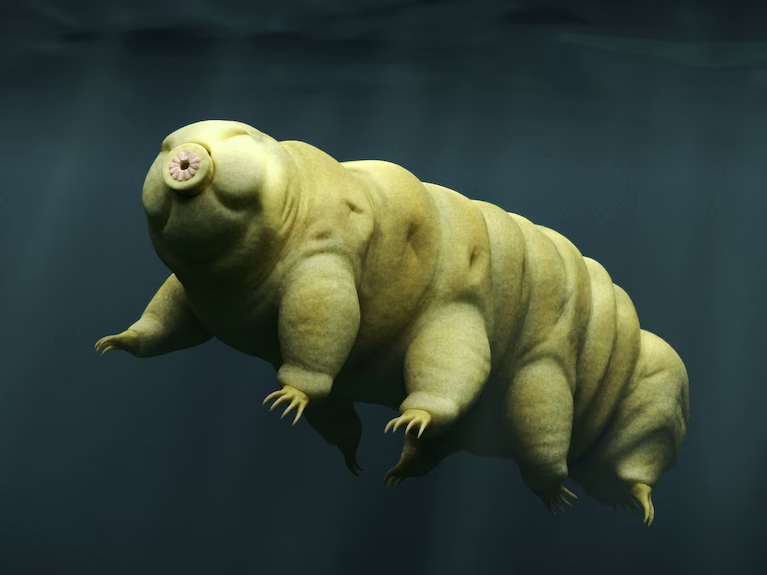Table of Contents
In 2019, the cargo of the Beresheet spacecraft crashed on the moon’s surface. The cargo contained tardigrades, organisms known to survive in any environment.
Over five years ago, Beresheet, a lunar probe built by SpaceIL and Israel Aerospace Industries in collaboration with the Israel Space Agency, was launched to the moon. But on the day of landing, its fate met a tragic end: the probe crashed into the lunar surface.
The moon mission, launched on February 22, 2019, was intended for the first private spacecraft to make a soft landing. On April 11, the spacecraft ran into trouble after its primary engine stopped working. Beresheet was moving at a speed of 500km/h at an altitude of 150m, and unable to stop, it crashed onto the moon’s surface. NASA‘s Lunar Reconnaissance Orbiter (LRO) photographed the deadly site of the probe on April 22.
The cargo included tardigrades, micro-animals known for their ability to survive in any environment. Studies suggest that these animals can survive in space conditions. It also had a “lunar library”- engraved on a nickel metal disc with a 30-million-page archive of human history that we can view under the microscope and human blood samples.
What are these animals?
Tardigrades, or “water bears,” are tiny eight-legged invertebrates that can survive in extreme conditions.
These mico-animals are less than a millimeter long and are related to arthropods (Insects) and nematodes (roundworms).
They can survive in harsh conditions, undergoing a state where they can dry out and drop their metabolism. Some species produce sugar, and others produce protein that gets absorbed into a glassy substance, which helps in resistance and protects the cell. When conditions return to normal, they revive themselves. They can maintain this state for decades.
Most of them live in moist environments but can live anywhere else. They can reproduce sexually or asexually via parthenogenesis (from unfertilized eggs) or self-fertilization (hermaphroditism).
They can withstand temperatures from -272℃ up to 150℃ and survive long-term exposure to 1,000 or 4,400 Gray gamma rays, enough to kill humans. However, The Britannica says tardigrades can be killed by exposure to hot water for a prolonged period.
What happened to Tardigrades on the Moon?
So, are these tardigrades still surviving on the moon’s surface? According to scientists, the conditions on the moon’s surface are quite favorable for these organisms to survive.
To colonize the moon, they need to survive the impact. A Science Alert report says that laboratory studies have shown that frozen specimens of the Hypsibius dujardini species get damaged after traveling at 3,000km/h speed in a vacuum smashed on the sand. Which is far below the speed at which the spacecraft crashed.
Since the moon lacks an atmosphere like Earth, its surface is susceptible to solar particles and cosmic rays. Tardigrades are also capable of resisting them.
Studies suggest that the dose of gamma rays hitting the lunar surface is low compared to the levels tardigrades can withstand.
Tardigrades also need a moist environment to survive. The cargo contained frozen samples of tardigrades. The lack of water on the moon’s surface makes it unlikely that these animals are still active.
However, despite its ethical consideration of lunar surface contamination, we still don’t know what happened to these tiny animals. On such grounds, our quest to understand extraterrestrial life and space exploration grows more extensive than ever.
